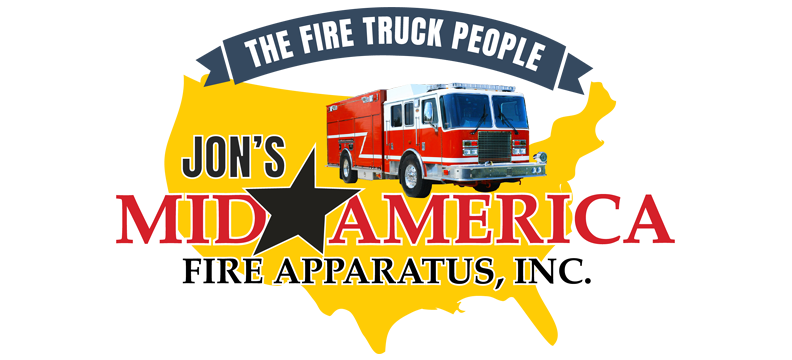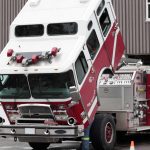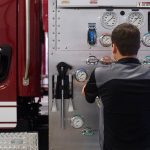Having the right fire apparatus in your fleet at the right time can literally mean the difference between life and death for your neighbors.
It goes without saying that all of your apparatus must be ready for action on a moment’s notice. They must meet rigorous safety standards and come equipped with up-to-date technology. In addition, your apparatus must also compete with other priorities for a place in your department’s and community’s budget.
When you’ve had a particular apparatus for several years, the question naturally arises — should you hang onto it a little while longer, or is it time to put it out to pasture and go shopping for a new apparatus to meet the needs of your department and community?
To help you simplify things just a bit, here are our “Big 3” factors to consider when deciding whether to repair your apparatus or start looking around at new fire trucks.
#1: Safety
The safety of your crew and community depend on having up-to-date fire apparatus with all of the necessary components on board.
- What is the age and condition of your current fire apparatus? According to NFPA 1911, any vehicle over 25 years old should be retired from service. Perform a quality assessment to determine whether making repairs would extend the useful life of your apparatus. You basically want to compare the value of repairing your current vehicles as opposed to buying new.
- Are critical components up-to-date and in good condition? Even if the vehicle itself has no problems, outdated or worn out components may hinder your ability to respond to an emergency, putting your whole community at risk. Have all major components inspected on a regular basis. If damage is minimal, simple low-cost repairs may be all that’s needed. If you have major damage to the pump, transmission or other critical systems, a new apparatus may give you the best value.
- Does your current apparatus comply with NFPA standards? NFPA 1911 ensures that in-service fire apparatus are in safe working condition and ready to respond to emergencies at all times. NFPA 1912 specifies strict requirements for the refurbishment of automotive fire apparatus. Have your apparatus inspected regularly by a professional who knows the code and can tell you whether a current apparatus can be brought up to standards or a new vehicle is needed.
#2: Technology
Just like your personal car or truck, the technology on board new fire apparatus changes every year.
That means the older your current fleet gets, the more trouble you may have keeping them up-to-date with the newer technological requirements of the parts and equipment included.
- If the vehicle is 10 or more years old, you may have trouble finding replacement parts because they simply might not be available anymore. Unlike the consumer automotive industry, firetrucks are not required to have replacement components available for a minimum of 10 years.
- If you select updated parts or equipment for an old fire apparatus, your technician may be required to rewire and/or reconfigure the vehicle in order to install properly.
- Even if the vehicle’s electrical system works fine, it may not be compatible with the power requirements of newer electronic equipment.
If you’re struggling to find replacement parts and equipment, or if the expense of installing updated components is too high, it may be time to go new.
In some instances, purchasing an entirely new apparatus may be the more economical option than replacing entire systems or having some functions and features completely redesigned.
#3: Cost
While a new fire apparatus is certainly not cheap, fire truck refurbishment that requires extensive repairs, can sometimes rival the cost of a new vehicle, depending on the type of work required.
Here are a few factors when considering whether to budget for repairing your current apparatus or approving the funds to buy a new one.
- Location, location, location. If you serve a big city, you will run more calls in more difficult driving conditions than in a smaller town. This means you may have to spend more money on fire apparatus repair and, ultimately, replacement, more often.
- Maintenance costs become excessive. Look at the maintenance needed to bring your current vehicles up to NFPA standards, and compare the cost of that to purchasing new. Generally, fire truck maintenance should cost no more than 50-60% of the cost of a new vehicle. If you’re above that ratio, a new vehicle that will be safer and last you longer may be the wiser investment.
- High intangible costs. Is your outdated equipment becoming difficult to use? If it’s interfering with firefighters’ ability to do their jobs in the heat of an emergency call, that old apparatus may be introducing unnecessary safety hazards and low department morale. To avoid the cost of replacing dissatisfied crew members, having up-to-date apparatus could be one factor in creating a more positive working environment.
It might be helpful to compile a report that compares the expected repair bill for current apparatus with the cost and maintenance needs of a new vehicle. Consider how your decision may affect firefighter and community safety, department morale and liability exposure for continued use of an old apparatus.
If you need help determining whether repair or replace is the best choice for your department, contact Jon’s Mid America. We’ll go over your options and help you make the best decision for your budget, your crew and your community.



